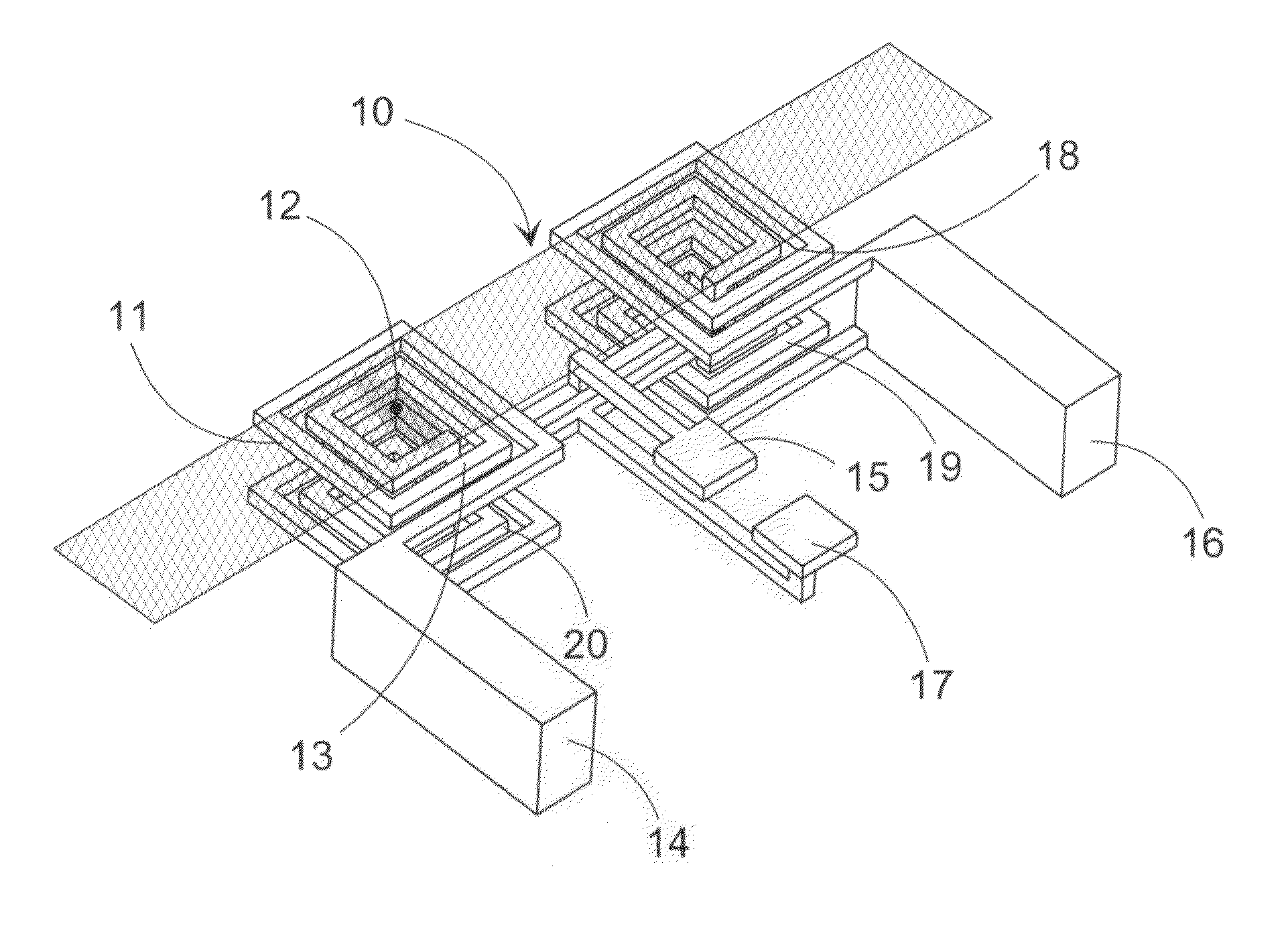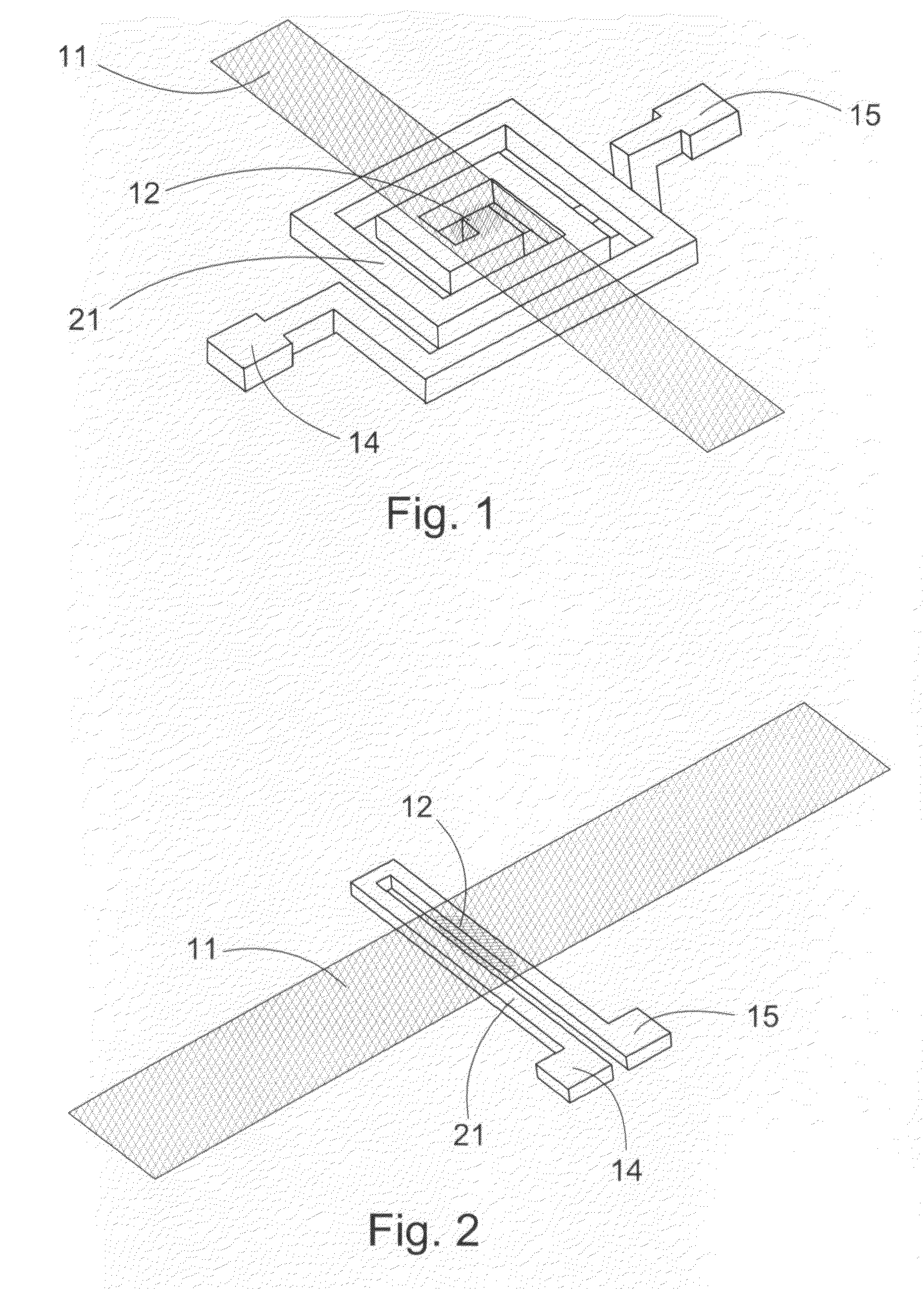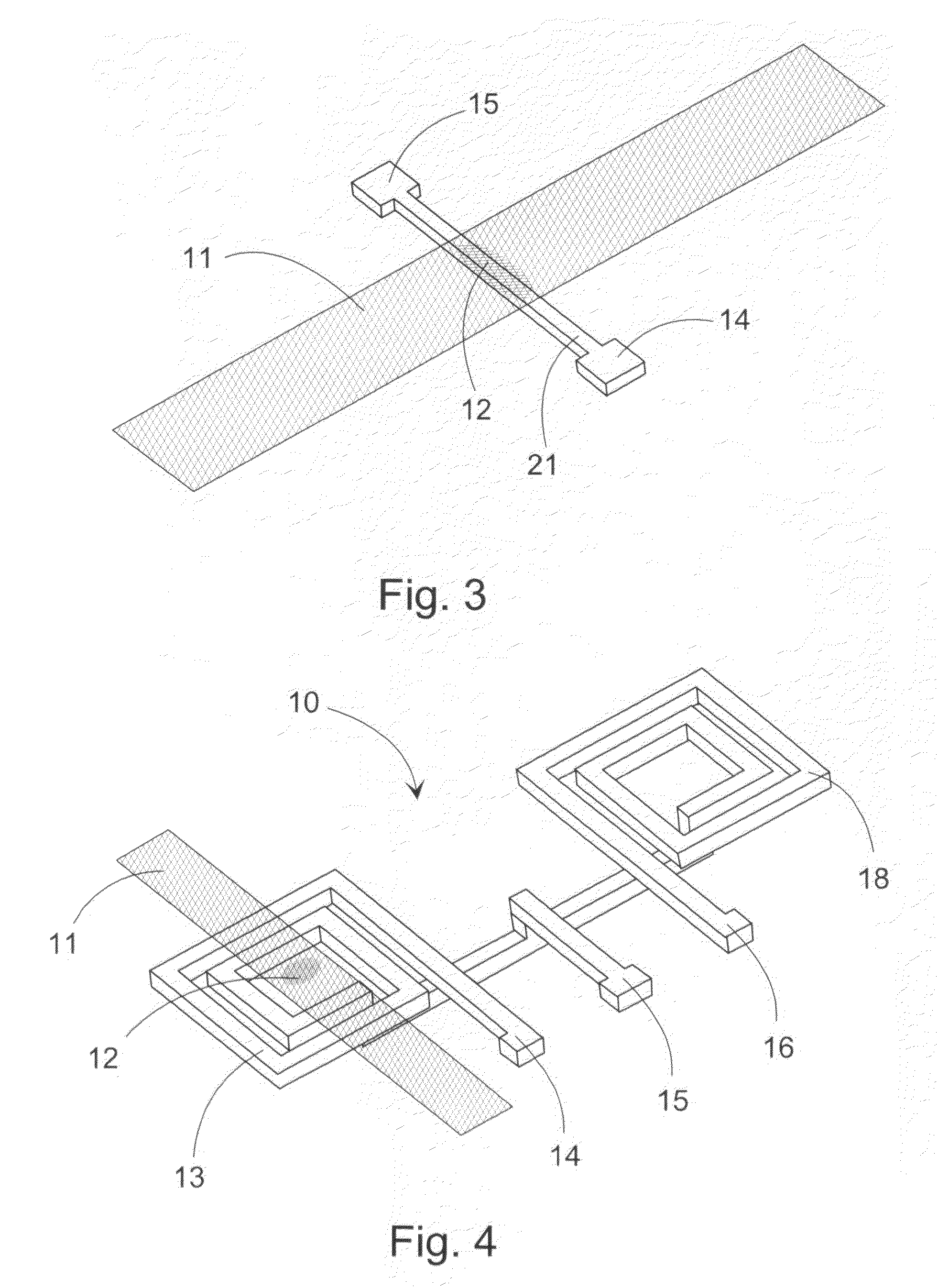Device for measuring magnetic particles and corresponding method
a technology of magnetic particles and measuring devices, which is applied in the measurement of magnetic particles, instruments, magnetic separation, etc., can solve the problems of insignificant change in inductance, sensitivity of apparatus, asymmetry of coils, and magnetic particles, so as to achieve accurate measurement results, less sensitive, and easy to distinguish
- Summary
- Abstract
- Description
- Claims
- Application Information
AI Technical Summary
Benefits of technology
Problems solved by technology
Method used
Image
Examples
second embodiment
[0041]FIG. 5 shows a differential sensor-loop pair, which is now formed of two single-winding planar coil loops 13, 18 parallel to each other. The construction is slightly simpler than the embodiment shown in FIG. 4 and thus more affordable to manufacture. In this embodiment, the test base 11 with the magnetic particles 12 is placed transversely on top of both coils 13, 18. Having the test base 11 on top of both coils 13, 18 improves, among other things, the elimination of measurement errors caused by the test base 11. There is a connection to the measuring system from the contact terminals 14-16, of which 15 is again a common intermediate output for both coils 13, 18. It should be noted that each coil 13, 18 can also have its own contact terminal 14-16, independent of the embodiment.
[0042]In both embodiments, the measuring coil 13 and the reference coil 18 forming the compensating structure for that thus now form a differential coil arrangement. The reference coil 18 arranged in co...
third embodiment
[0053]FIG. 10 shows bridge measurement, in which the coils 13, 18-20 are again on the same level, but in this base in a row formation. Again, the measuring coil 13 and the reference coil 18 are aligned symmetrically relative to the measuring-signal conductors 15, 17. Also in this case, the input-signal conductors 14, 16 come from the sides. The compensation coils 19, 20 are now at the ends of the coil array on either side of the measuring and reference coils 13, 18. The test base 11 with the magnetic particles 12 is again located transversely on top of all the coils 13, 18-20. One advantage of this construction is a better alignment relative to the test base 11.
[0054]According to yet another bridge-measurement embodiment, the coils 13, 18-20 can also be concentrically on a post. In this case, reference can be made to FIG. 9. The signal conductors of the measuring and reference coils 13, 18 can, differing from FIG. 9, also be run in such a way that if necessary insulating material ca...
PUM
 Login to View More
Login to View More Abstract
Description
Claims
Application Information
 Login to View More
Login to View More - R&D
- Intellectual Property
- Life Sciences
- Materials
- Tech Scout
- Unparalleled Data Quality
- Higher Quality Content
- 60% Fewer Hallucinations
Browse by: Latest US Patents, China's latest patents, Technical Efficacy Thesaurus, Application Domain, Technology Topic, Popular Technical Reports.
© 2025 PatSnap. All rights reserved.Legal|Privacy policy|Modern Slavery Act Transparency Statement|Sitemap|About US| Contact US: help@patsnap.com



